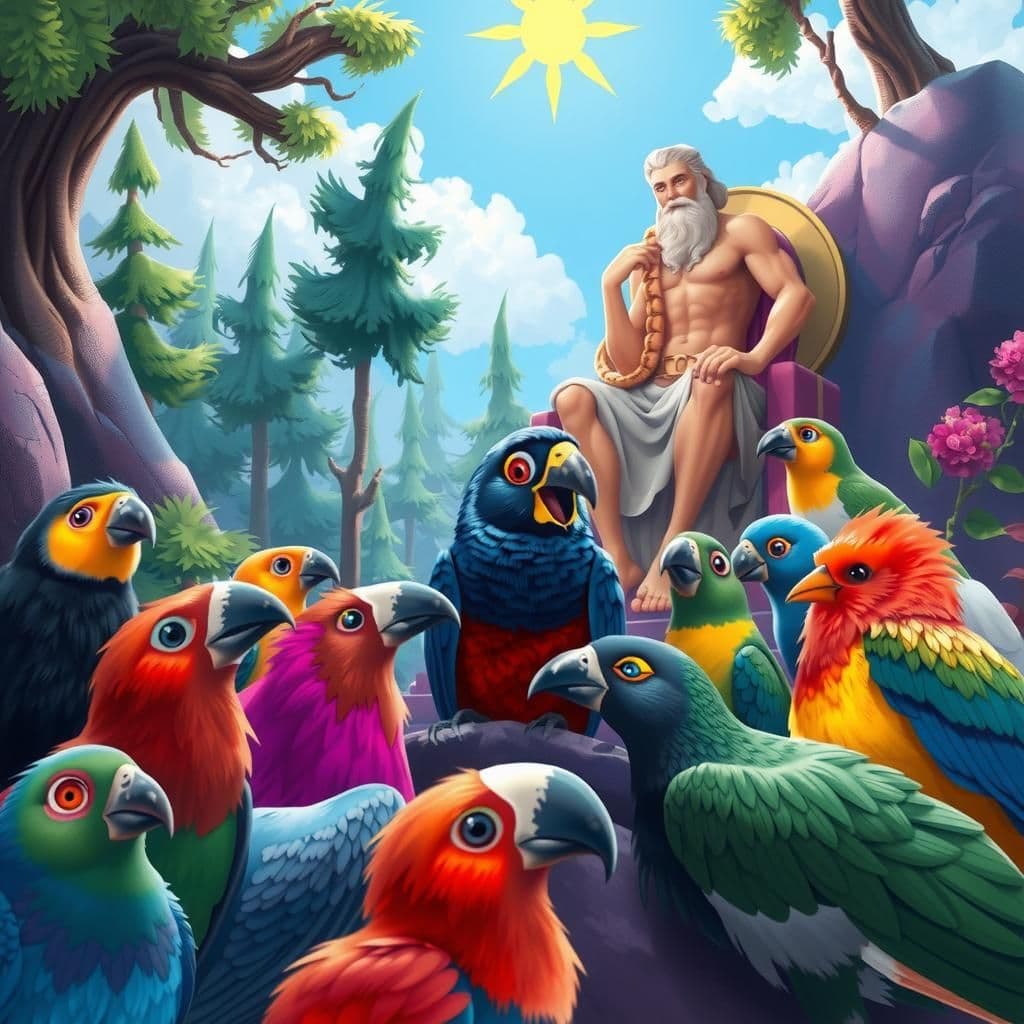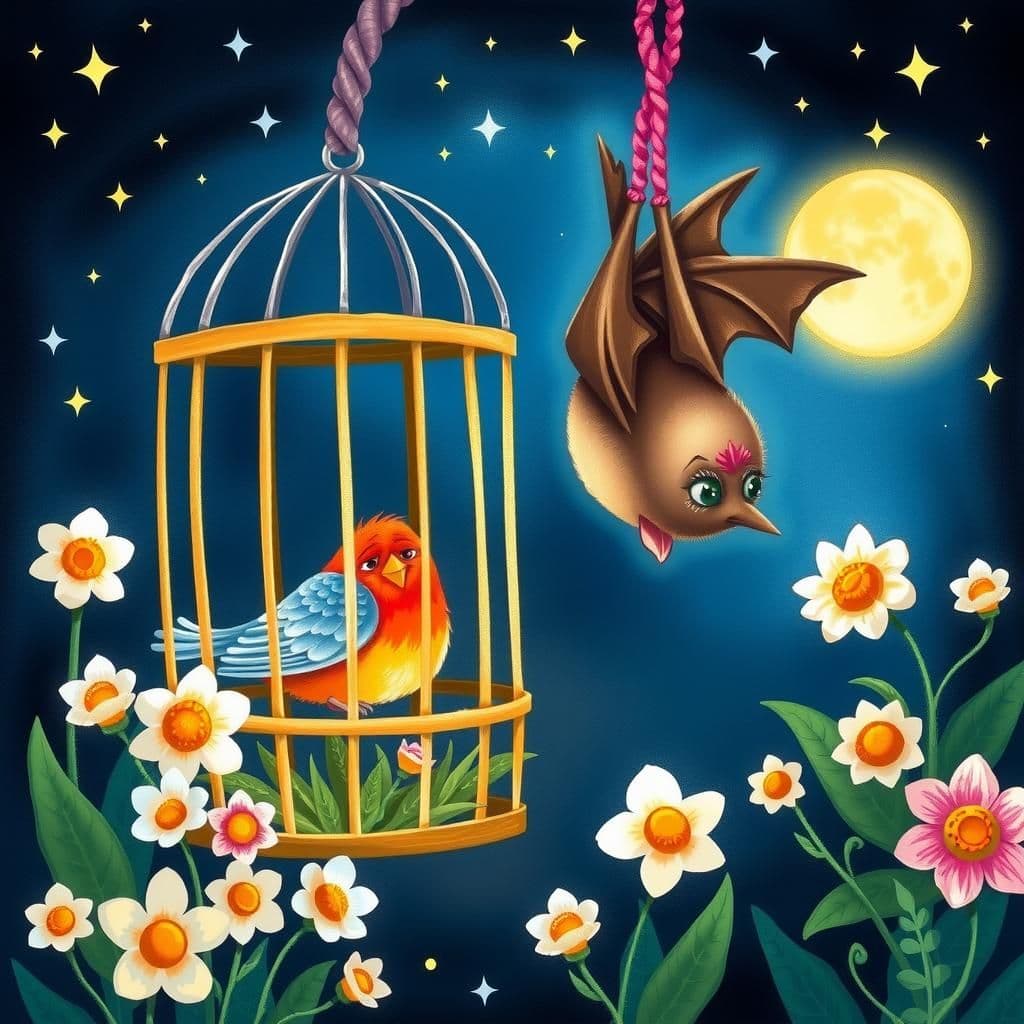The Birds the Beasts and the Bat

Story Summary
In "The Birds the Beasts and the Bat," a Bat shifts his allegiance between the warring Birds and Beasts to ensure his safety, ultimately revealing the consequences of betrayal. As his deceit is discovered by both sides, he is shunned and forced into darkness, illustrating a powerful lesson found in meaningful stories with moral: those who betray trust will end up friendless. This short moral tale serves as a reminder that playing both sides often leads to isolation.
Click to reveal the moral of the story
Those who betray others for their own advantage will ultimately find themselves isolated and friendless.
Historical Context
"The Birds and the Beasts" is a fable attributed to Aesop, a storyteller from ancient Greece whose works often featured animals embodying human traits to convey moral lessons. This particular tale reflects themes of betrayal and the consequences of opportunism, resonating with Aesop's broader cultural context of using allegory to critique human behavior and impart wisdom, influencing countless retellings throughout history. The moral, emphasizing the pitfalls of duplicity, remains relevant across various adaptations and cultures.
Our Editors Opinion
In modern life, the story of the Bat serves as a cautionary tale about the consequences of opportunism and betrayal, illustrating that shifting allegiances for personal gain can ultimately lead to isolation and mistrust. For example, in a workplace scenario, an employee who frequently shifts loyalties between competing teams to advance their own career may find themselves ostracized when colleagues discover their duplicity, leading to a loss of both professional relationships and credibility.
You May Also Like

Jupiter and the Birds
In "Jupiter and the Birds," Jupiter calls upon all the birds to choose the most beautiful one as their king. The jackdaw, disguised with borrowed feathers, initially impresses but is soon exposed, prompting indignation from the others. However, Jupiter praises the jackdaw's cleverness, declaring him king and illustrating a thought-provoking moral: that wit is more valuable than mere appearance, making this a memorable story with moral significance.

The Cage Bird and the Bat
In this timeless moral story, a caged bird sings only at night, having learned the hard way that singing during the day led to her capture by a fowler. When a bat questions her precautions, it highlights the futility of taking such measures after already being imprisoned. This short story serves as a powerful reminder that precautions are meaningless once one is already in danger, making it a valuable addition to any collection of famous moral stories for kids.

Two of the Damned
In "Two of the Damned," a poignant short story with moral undertones, two cursed beings representing December 25th and January 1st meet on a desolate heath, exchanging holiday greetings laden with sorrow and despair. Their embrace and shared tears symbolize their bittersweet existence as icons of celebration, yet deeply flawed, reflecting the heartwarming moral that even in exile, connection and empathy can arise from shared suffering. This narrative serves as a reminder of the complexities of joy and sorrow, making it a compelling choice among real-life stories with moral lessons for adults.
Other names for this story
The Wily Bat, Allies in Shadows, The Betrayal of the Bat, War of Wings and Claws, The Duality of the Bat, Shadows of Deceit, The Bat's Lonely Flight, The Price of Betrayal
Did You Know?
This fable illustrates the theme of loyalty and the consequences of duplicity, highlighting how those who try to play both sides ultimately end up isolated and rejected by everyone. The Bat's fate serves as a cautionary tale about the dangers of betraying trust for personal gain.
Subscribe to Daily Stories
Get a new moral story in your inbox every day.